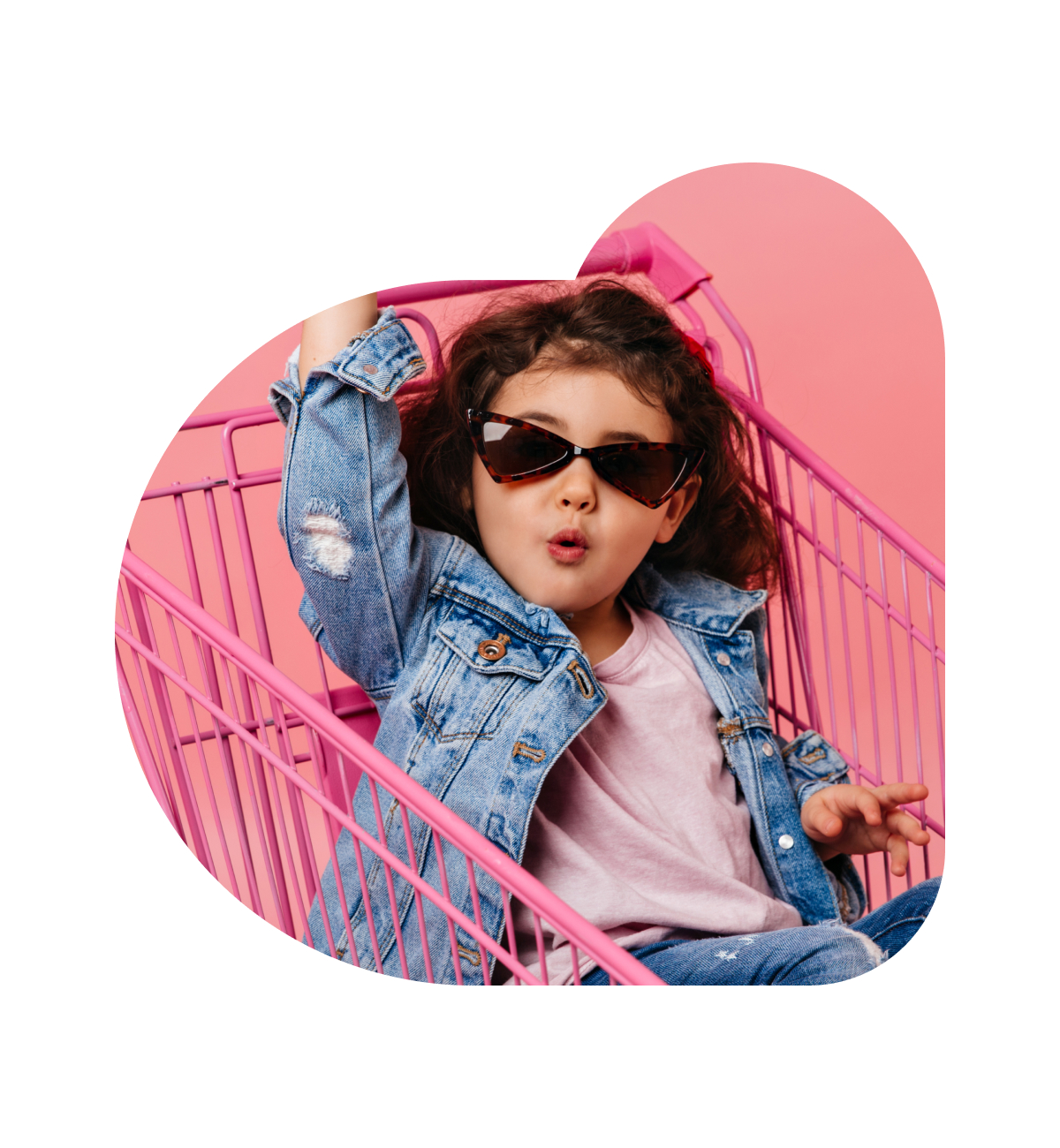Gen Alpha, the successors to Millennials and Gen Z, are reshaping how we think about marketing with their unique traits and tech-savvy nature. Let’s uncover what makes these globally aware kids tick and how businesses can keep up.
The Death of the “Tween”
Remember the early 2000s when tweens flocked to malls, heading straight to Limited Too? It was the younger version of The Limited and a go-to spot for logo tees and glittery accessories. As a 12-year-old girl, it was your favorite store. Or maybe you preferred Wet Seal, Delia’s, The Body Shop, Lush, or Charlotte Russe, places where young people explored who they wanted to be. By the late 2000s, Limited Too was gone and so was the tween shopping experience.
Gen Alpha, kids 14 and under, are known as the ‘landmark generation’ but surprisingly have few dedicated retail spaces. This is odd because they’re expected to be the largest generation in history, with over 2 billion born between 2010 and 2024. With nowhere to go, older Gen Alphas are jumping straight into adult brands like Starbucks, Lululemon, Sephora, Walmart and Target, influenced by their millennial parents.
Younger Gen Alphas are even more influenced by their millennial parents, who are still shopping for them. These parents do a ton of research before buying anything and exhibit higher brand loyalty, preferring nostalgic choices for their kids such as Disney, Lego, Nintendo and Fisher-Price.
To add further nuance, it should be noted that attempts by adult brands to target Gen Alpha separately, like Project Gap, don’t top their favorites list. That honor goes to brands like Amazon, Apple, Nintendo and Target—places adults love too. Gen Alpha and Gen Z share almost the same top 10 favorite brands. This generation is very brand-savvy, so businesses need to stay authentic. Speaking to them like they’re children can come off as patronizing.
At the end of the day, while Gen Alpha may have distinct brand preferences, they don’t yet have independent purchasing power. The reality of what brands kids are repping is down to what their parents are willing and able to buy them. So brands continue to market to adults, even if their consumers are getting younger by the day. If you’re wondering why 10-year-olds’ Sephora shopping carts are filled with retinols and heavy exfoliants, look no further than who’s paying for it.
Who’s influencing who?
These shopping habits were built online over the past decade, first on Instagram and then on TikTok. Gen Alpha has grown up digitally connected, learning to “get ready with me” by listening to their favorite YouTubers list off the brands they consume during their daily morning routine, or things like WaterTok and IceTok, where recommendations about ice cube trays and water additive packets are free-flowing and monetized.
Certain products have reached cult status thanks to their constant appearances in Instagram Stories, YouTube haul videos and TikTok For You Pages. These brands do more than just serve a purpose though, they help tweens feel accepted in a community of multigenerational tastemakers. Buying these brands is like a rite of passage into adulthood and a way for Gen Alpha to join online culture.
Around 25% of Gen Alphas say influencers are their main shopping source and nearly 60% of their parents note that their kids watch shopping content, influencing their purchases based on favorite YouTube or Instagram personalities. This trend means companies should look into influencer partnerships for effective brand promotion.
However, to give credit where credit is due, Gen Alpha is changing how they use media, shifting towards more entertaining and funny content that sparks engagement. They value digital and human connectivity, pushing companies to create shareable and conversation-starting content.
Sustainability or Bust
While parents and influencers shape their choices, Gen Alpha has strong opinions. About 66% prefer buying from companies that make a positive impact and 67% want careers that help save the planet.
It makes sense that Gen Alpha is so eco-conscious—they’re growing up in a time of big environmental awareness. They’re more informed about issues like climate change, plastic pollution and biodiversity loss than previous generations were at their age. Sustainability is part of school curriculums, all over social media and a priority for many of their parents.
As a result, Gen Alpha prefers eco-friendly products like those made from recycled materials, biodegradable items and minimal packaging. They support brands with ethical practices, including fair trade and corporate social responsibility. They also favor locally sourced and organic products to reduce carbon footprints. Brands need to keep innovating to meet Gen Alpha’s high sustainability standards.
Marketing to Gen Alpha
Now that you understand what influences Gen Alpha’s buying preferences, let’s talk tactics for effectively marketing to them:
1. Leverage Influencers: With many Gen Alphas looking to influencers, collaborating with popular YouTubers or Instagram stars can significantly sway their purchasing decisions.
2. Nostalgic Branding: Since their parents are loyal to familiar brands, tapping into nostalgia in your campaigns can resonate well.
3. Entertaining Content: Create humorous, shareable media to match Gen Alpha’s love for engaging content.
4. Balancing the Experience: Blend online and offline interactions to play on Gen Alpha’s value for connectivity.
Adopting these marketing tactics can allow businesses to navigate the unique characteristics and preferences of Gen Alpha, ensuring a meaningful and impactful presence in their world.



















